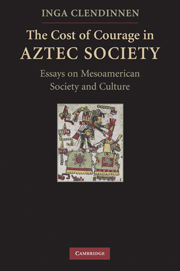5 - Landscape and World View
The Survival of Yucatec Maya Culture Under Spanish Conquest
Published online by Cambridge University Press: 05 August 2012
Summary
The religions of contemporary Middle American Indian communities fall neatly enough under the descriptive category we call ‘syncretic’. Myths and rituals, integrated experiences for the participant believers, betray to the outside observer their Spanish and Indian antecedents. This indicates a methodology of analysing the ongoing flow of religious life into its smallest constituent parts – colours and gestures, sacred objects and sacred locations, the structure and language of invocations – the more precisely to identify the ingredients of the ‘mixed’ religion we see being lived out. When enquiry moves to the process of imposition and selection by which the mix was initiated, in the early days of Spanish-Indian contact, the same familiar methodology lies ready to hand: Spanish Catholicism, and what is known of the traditional Indian religion, can be analysed into elements, those elements arranged in parallel, and the likely ease of transferance inferred, being judged to be the highest where a match seems good and where evidence from the ethnographic present appears to offer confirmation.
The method has its utility, not least in that it facilitates comparison between cases and allows some estimation of degrees and rates of acculturation. Its defects lie in its assumptions that the Spanish presence was a constant and was identically perceived by all Indian groups, and (more important) in the ‘mosaic’ models of religion and of culture on which such an analysis rests.
This paper explores another approach. Spanish invasion and colonisation was very differently experienced by different native American groups.
- Type
- Chapter
- Information
- The Cost of Courage in Aztec SocietyEssays on Mesoamerican Society and Culture, pp. 156 - 178Publisher: Cambridge University PressPrint publication year: 2010

